
Licorice root
Licorice root (Glycyrrhiza species) is a versatile plant I use frequently at the free clinic. The flavor of licorice can swing both ways. While some people enjoy its taste, a sizeable contingency of others strongly dislike its flavor. This makes it important to ask people their preference before including licorice in their herbal medicine.
While licorice has many benefits, there are some relevant safety concerns (see Safety section).
There are two commonly used licorice species. The medicinal and safety information below applies to both of them.
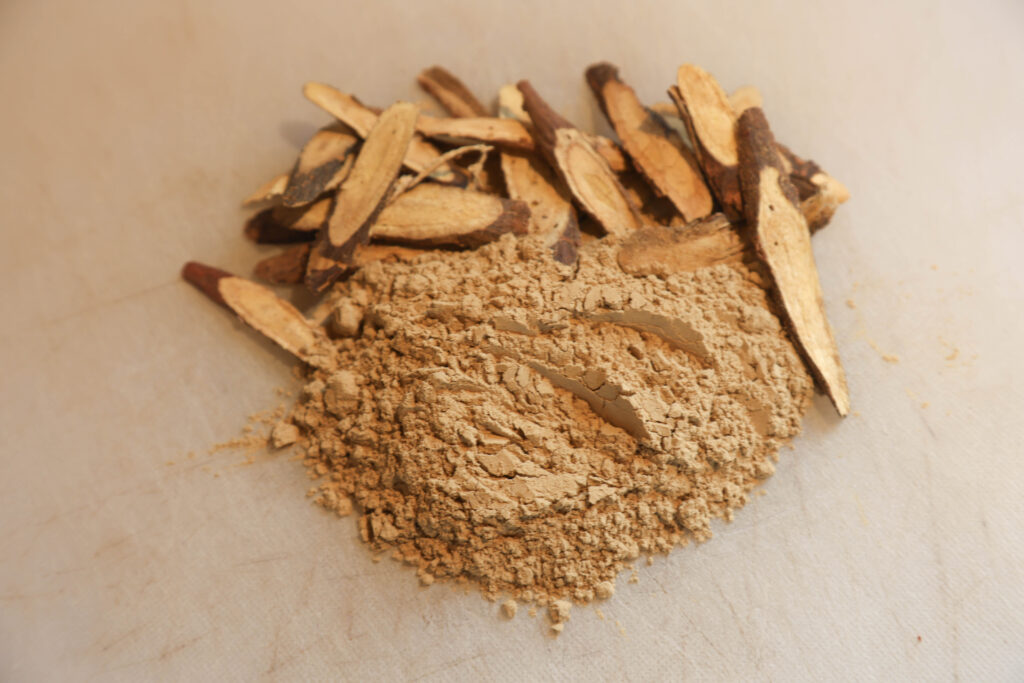
These species are used interchangeably.
Botany and Nomenclature
There are two main species of licorice used as medicine. They are Chinese licorice (Glycyrrhiza uralensis) and European licorice (Glycyrrhiza glabra) in the pea family (Fabaceae).
There is one common species native to the US, Glycyrrhiza lepidota, but its roots do not have the same sweet flavor (and I have chewed many of them), though it is used medicinally by Native Americans.
The two species covered here grow in a wide geographic area in Asia and Europe. The licorice roots sold in the marketplace are cultivated.
Glycyrrhiza means sweet root (think glycerin and rhizome). Glabra means without hairs. Uralensis implies that it comes from the Ural region.

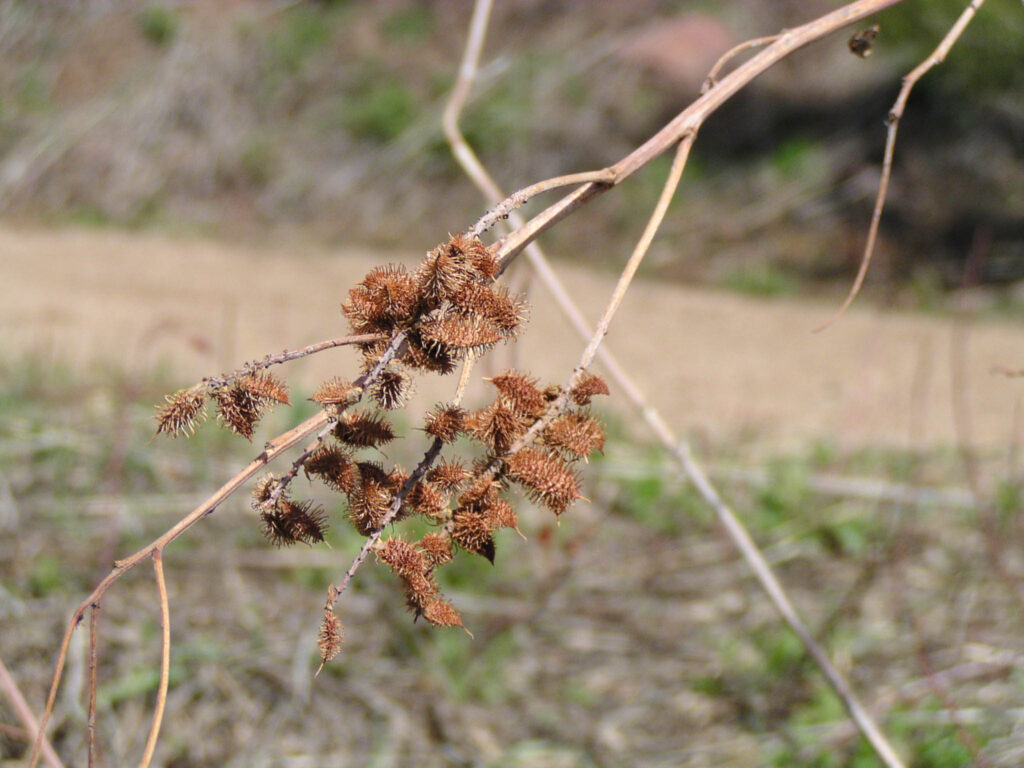
Twizzlers, The Netherlands, and Tobacco
I looked up Twizzlers while researching licorice and was surprised to see that black Twizzlers actually contain some licorice extract (along with other natural and artificial flavors_.
While licorice candies are not that popular in the US, they are jumpin’ in the Netherlands, where the yearly gross national consumption is about 4 pounds per person. But these are very different candies than those generally found in the US and come in salty, sweet, and sour flavors. The most common ‘licorice’ candy in the US is Twizzlers (with the most popular being ‘Strawberry’ flavor, which contains zero licorice). (How is it even a ‘licorice?’)
The US is the third largest importer of licorice extract. Guess where it goes? The majority is used for tobacco flavoring. Yup, licorice extract is found in cigarettes and chewing tobacco. It is utilized for several reasons, including mellowing the harshness of nicotine, enhancing the flavor, reducing the dryness in the smoker’s mouth and throat, and increasing the moisture of the tobacco, thereby increasing its shelf life. Unexpected, eh?
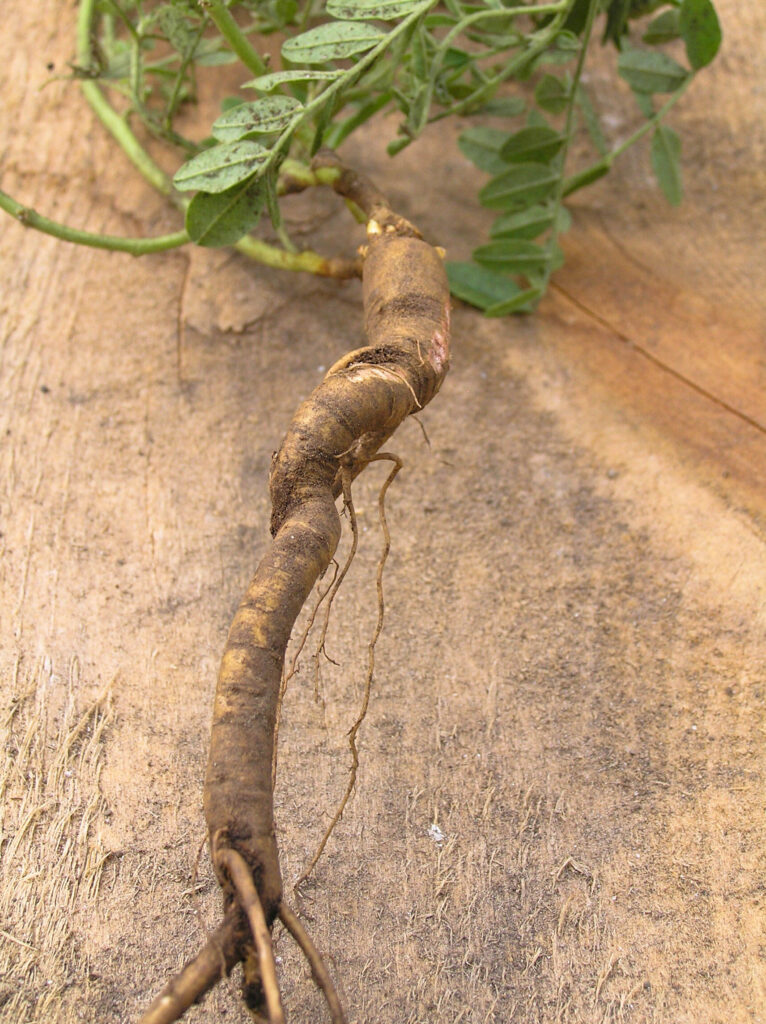
Glycyrrhiza species it is.
Safety
Licorice has some significant safety concerns, mainly involving the cardiovascular system and high blood pressure. Licorice is generally recognized as safe (GRAS) as a food supplement by the FDA. While I think there are often exaggerated safety concerns for some medicinal plants, the concerns about licorice’s adverse effects happen more frequently. These health issues are usually observed with regular and heavy use of licorice (often in the form of licorice candy).
The main constituent that causes this effect is glycyrrhizin, a saponin that gives licorice its sweetness as well as some of its medicinal activity. When ingested, gut bacteria convert it to more active elements, which are then absorbed into the bloodstream. Glycyrrhizin mimics steroid hormones in the body, including aldosterone. (This is going to get more complex). There are few hypotheses on how it causes its downstream health effects. One is that the metabolites of glycyrrhizin can bind to the mineralocorticoid receptors on the kidneys. Another is that it affects cortisol, which in turn affects aldosterone. In both of these scenarios, there is reabsorption of sodium and water into the body and the excretion of potassium. The net effect is called pseudohyperaldosteronism (say it with me). What this means is that it has the effects of too much (hyper) aldosterone, but it is not caused by that hormone (pseudo). This leads to a loss of potassium (hypokalemia) and an increase of sodium levels in the blood (hypernatremia) with increased water retention. This increase in water retention is dangerous for people with high blood pressure (hypertension).
There are questions about who this affects and the amount and frequency of licorice needed to create this type of hypertension. In my clinical practice, I am cautious with giving moderate to large, sustained amounts of licorice to anyone with high blood pressure. In day-to-day clinical practice, this increase in blood pressure is uncommon, with the quantities of licorice generally given medicinally. I suggest an attentive and conservative approach along with blood pressure monitoring when in doubt.
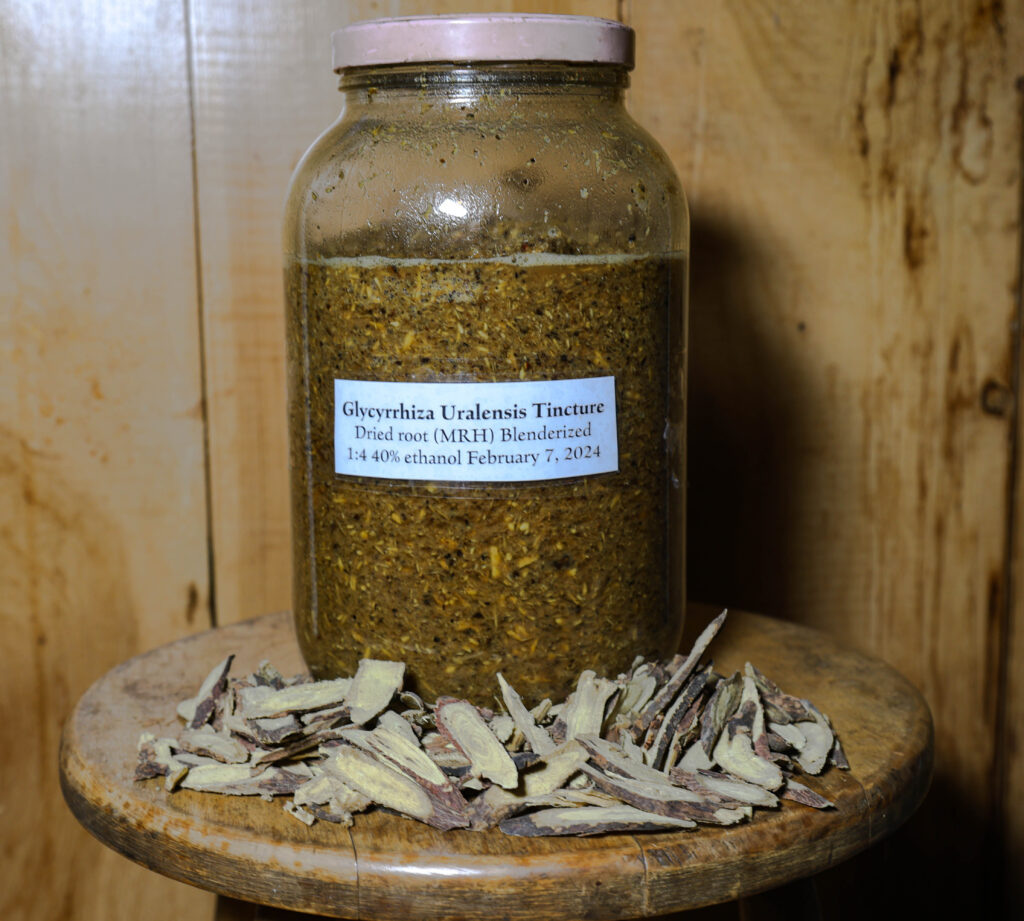
Deglycyrrhizinated licorice
Deglycyrrhizinated licorice (DGL) is a form of licorice where the glycyrrhizin is removed, making it a safer product for long-term use. It is usually used with acid reflux.
I do not use DGL or most other constituent-only herbal products, as I feel it changes the character (strength, properties, etc) of a plant. If licorice seems inappropriate for a patient, I will use a different plant rather than DGL. But it is widely used by other practitioners.
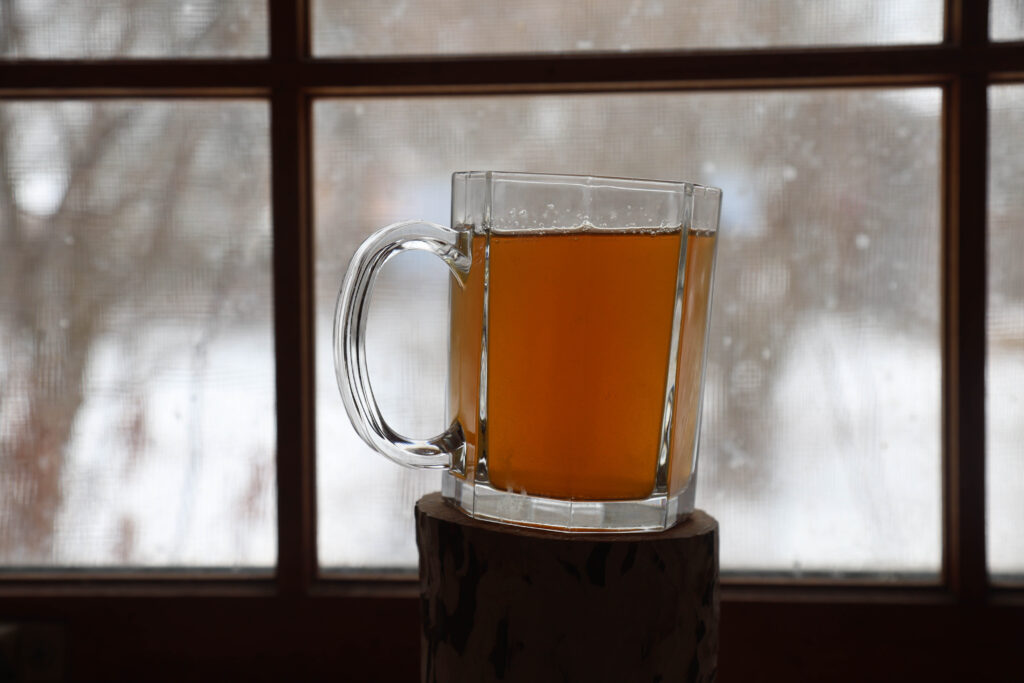
Medicinal Properties
Licorice is one of the most widely used medicinal herbs due to three beneficial properties: it is demulcent, antiinflammatory, and steroid-like properties. Along with those attributes, it is a flavoring agent (see opening paragraph) and also helps bring the various flavors of a formula together.
As an antiinflammatory it is used for both joint and organ inflammation. It is used internally for arthritis, digestive and respiratory inflammation, sore throat, and swollen gums.
Its demulcent mucous membrane soothing properties make it useful for respiratory, digestive, and urinary tract irritation. It is also beneficial for dry coughs, and its expectorant action helps bring up phlegm.
Its steroid-like action makes it useful for some fatigue syndromes as well as for people with low blood pressure, as with postural orthostatic tachycardia syndrome (POTS).
The raw roots can be useful and can just be handed out for people to chew on when needed. This can be helpful for dry, sore throats, whether due to talking, singing, or just general dryness. I have also seen this helpful for toothaches due to its antiinflammatory action.
Preparations & Dosage
I think the most beneficial form is Licorice powder, which can be stirred into water or another fluid. This brings out its mucilaginous qualities.
I mostly use it as part of a tincture formula for the convenience. Other preparations include tea, capsules, and chewing the raw roots.
Please read the safety guidelines before using any of these preparations. The dosage will vary depending on what else is in the formula and the condition being treated.
Tincture the dried root at 1:4 in 40% ethanol. I blenderize this.
Tea-1/2 ounce lightly simmered in 16 oz (1 pint) water for 10 minutes. This makes a strong-flavored tea with some mucilaginous consistency.
Below are some powder measurements to give an idea of flavor and demulcent effect (which I refer to as ‘gloopy’). The measurements are accurate, but the flavor and gloopiness are (of course) subjective.
One-half teaspoon stirred in 8 oz of water has a medium licorice flavor and is not gloopy.
One-half teaspoon stirred in 4 oz of water has a strong licorice flavor but is still not very demulcent.
One teaspoon stirred in 8 oz water, robust licorice flavor, slightly demulcent.
One teaspoon stirred in 4 oz water, very strong licorice flavor and medium gloopy.
A Few More Notes
This monograph is based on my personal experience using this plant. With its long history of use and a lot of modern research, many other medicinal attributes are attributed to licorice, which I suggest exploring if you are interested in learning more about this versatile and valuable medicinal plant.
